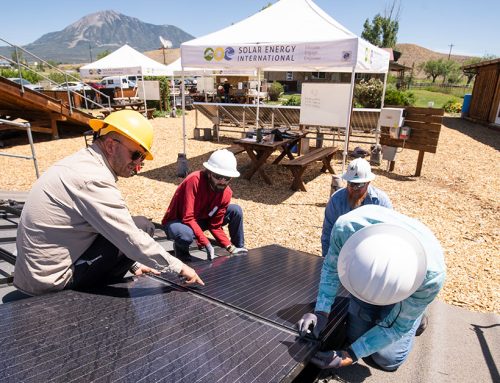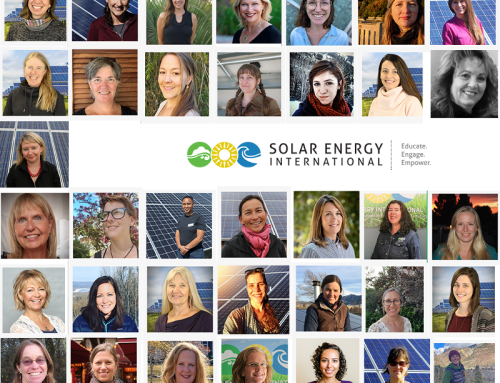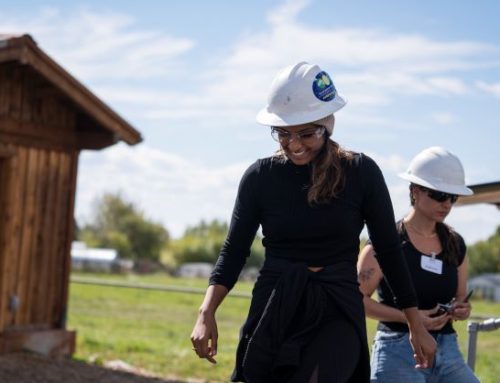How can we build equitable food and energy systems that improve environmental conditions?
In the podcast episode “Energy and Food Nexus”, guests Mary Marshall (SEI’s Solar Forward program) and Pete Kolbenschlag (Colorado Farm and Food Alliance) share about how to improve our energy and food systems.
A common characteristic of the energy and food system is the need for efficiency. The steps required to grow food and feed a population are energy-intensive; accounting for 17% of all fossil fuels consumed in the United States. Industrialized agriculture is dependent on fossil fuels to grow, harvest, process, package, and transport food.
To improve the efficiency of the food system, we need to think locally. In the episode, Pete uses an example of a tomato shipped from Mexico to be served in a burrito in Colorado. A more efficient process would be for that tomato to come from somewhere more locally thus reducing the supply chain and the transportation emissions. Locally produced agriculture supports local farms, businesses, and economies. Pete states, “Rather than providing tomatoes to the most people at the cheapest cost, we should be thinking – how can we provide tomatoes with the shortest supply chains?” These are fundamental system questions that challenge political, social, and capitalistic ideologies.
Instead of replacing fossil fuel energy with renewable energy, the better approach would be to make the system energy efficient and then transition to renewable energy. Mary advises homeowners to perform energy efficiency upgrades before installing rooftop solar – and the same can be applied to agriculture systems. The less power a farm operation needs, the less renewable energy is required to feed (pun intended) the system.
There are two ways food systems can take advantage of renewable energy – grid-connected renewable energy and “behind the meter” renewable energy. Grid-connected renewable energy, such as solar or wind farms, leverage existing grid infrastructure to distribute renewable energy sources. These are large projects that provide renewable energy to whole communities. “Behind the meter” renewable energy is generated by onsite solar or micro-hydro systems that feed energy into farm operations thus eliminating the need for grid connectivity. Typically, these systems are used for a single property and can be used to power pumps, refrigeration, and other operations that rely on electrical power.
How can we build equitable food and energy systems that improve environmental conditions? The answer to this question is by creating efficient, local energy and food systems. To improve existing food and energy systems, policies and programs need to support sustainable agriculture practices and local economies. Focusing on a small scale, local food and energy systems can support local jobs which keeps the wealth in the community. Incentivizing sustainable agriculture promotes soil building and keeps harmful chemicals from entering the environment. Removing fossil fuel subsidies helps the renewable energy industry compete in the energy market. Expanding federal programs like the Rural Energy for America Program which provides grants and loans for renewable energy and energy efficiency in agriculture. These are some of the strategies that can be used to build a sustainable food system.
Mary Marshall manages the Solar Forward program which empowers nonprofits and community groups in rural regions across Colorado with the tools and expertise to kickstart solar markets, and Pete Kolbenschlag is an executive director at the Colorado Farm and Food Alliance, an organization grown from a grassroots effort in opposition to oil and gas lease sales in the North Fork.
Podcast directed and recorded by Garrett McDaniel, a graduate student at Western Colorado University who is studying environmental management and a sustainability professional in Boulder, CO.




